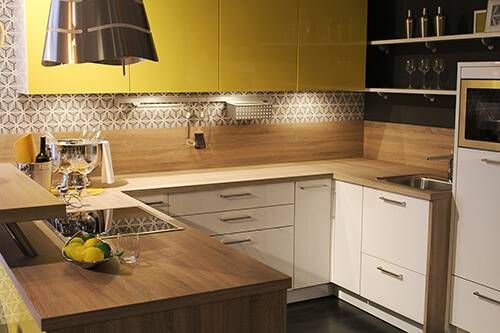How Boomers Can Sell Their Homes to Millennials
This real estate broker suggests four projects to snag a sale
Newsflash to retiring boomers: Millennials account for 32 percent of real estate buyers, according to the National Association of Realtors. That’s why it’s essential to know what Millennials want in homes. Their values and desired lifestyles are very different than their boomer parents.
Millennials, perhaps more than boomers, have very specific criteria when choosing homes. Make your house fit their criteria and you will expand buyer interest, which means your home will sell faster and probably at a higher price.
What Boomers Wanted, What Millennials Want
Generally speaking, boomers who bought homes to start families purchased what their budgets allowed and fixed them up over time. Nothing could be further from the minds of typical Millennial buyers.
For the most part, Millennials are looking for the finished product and will pay for it. They want what they see in magazines — nothing less. They don’t seem to view themselves living in any one place for a very long time, so there’s no time for gradually rolled out home improvements.
The bottom line: To capture the highest selling price, undertake some key home renovations before listing your house for sale.

Here are four projects to consider:
Open the kitchen to a family room and combine them into one space. Millennials want kitchens that are great places to hang out with everyone while cooking. Even if the removal of a wall creates fewer cabinets and, in your mind, reduces the functionality of the kitchen, do it and increase the desirability of your home.
For the same social reason, if at all possible, give your kitchen a center island with room for stools, because that’s where Millennials want to congregate. (If you have a dining room, they may well turn it into their home office.)
Be certain your home has easy WiFi access throughout the house. Millennials demand the ability to use their smartphones and tablets everywhere. So make sure cell signals are strong and, if they’re not, install WiFi boosters. A faltering cell signal can be a deal breaker for Millennials.
Fill your home with eco-friendly materials. Boomers taught Millennials that recycling was a big “green” idea. Millennials take this a giant step further, viewing themselves as “members of the planet.” Consequently, eco-friendly materials and lifestyle choices are a part of Millennial DNA.
Fast-grown materials like bamboo in flooring and wood with FSC (Forestry Stewardship Certification) in kitchen and bath cabinets are important considerations, and thus clear selling points.
Oh, and save yourself from any conversation about underground oil tanks: if you still have one, remove it before listing your house.
Make sure your house is healthy for its inhabitants and visitors. Millennials want to see health-focused home improvements such as no-VOC off-gassing from paint; mold- and fungus-free basements and good air quality. They also prefer wood flooring over carpet and look for super energy-efficient heating and cooling systems.
Home Location and Size
That said, there are two other things you should know about Millennial buyers that you can’t do much about.
One is that accessibility to an urban center will figure into the pricing of your home. Millennials want to be walking distance or minutes from town. Being out in the boonies and spending lots of time driving is not appealing to them. If your house isn’t near a city, discuss with your listing broker how best to offset this negative.
Unlike boomers, who often opted for more property in exchange for slightly more remote locales, Millennials will accept smaller lots just to be near the city.
The other issue you can’t do much about is that a large house may be a turn-off to Millennials. The-bigger-the-better mansion-sized homes were status symbols for super-successful boomers. But that concept is antithetical to Millennials, no matter how successful they are. Many of them reject size over efficient use of space.
As a real estate broker, I frequently hear statements from Millennial buyers like: “I don’t want to be in separate parts of the house and never see my family.”
For them, compact, well-designed “open concept” and “connected” floor plans are the order of the day.
Every seller can improve the selling value of his or her home. A bit of good planning, based on key trends, and the right upgrades can position yours for the broadest audience. In real estate, “good luck” is generally created.

